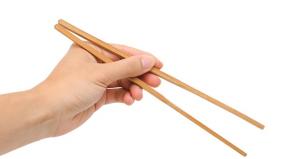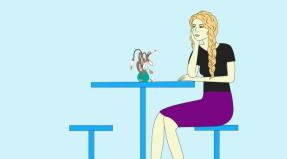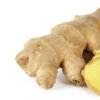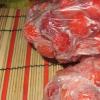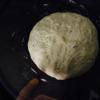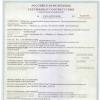Dependence of gear noise on load. Noise and ultrasonic protection. Noise control methods. Calculation of gearing for noise
Noise gears caused by vibrations of the wheels and structural elements associated with them. The reasons for these oscillations are the mutual impact of the teeth when engaging, the variable deformation of the teeth caused by the inconstancy of the forces applied to them, the kinematic errors of the gears, and the variable friction forces.
The noise spectrum occupies a wide frequency band, it is especially significant in the range of 2000-5000 Hz. Against the background of a continuous spectrum, there are discrete components, the main of which are frequencies due to the mutual collision of the teeth, the action of errors in the engagement and their harmonics. The components of vibration and noise from deformation of the teeth under load are discrete in nature with a fundamental frequency equal to the frequency of re-coupling of the teeth. The frequency of action of the accumulated error of the gear wheel is a multiple of the rotation frequency. However, there are cases where the accumulated circumferential pitch error does not match the rotational speed; in this case, there will be another discrete frequency equal to the frequency of this error.
Oscillations are also excited with frequencies determined by the errors of the gear pair (misalignment of the axes, deviation from the center-to-center distance, etc.). Gearing is a system with distributed parameters and has a large number of natural vibration frequencies. This leads to the fact that in almost all modes the operation of the gearing is accompanied by the occurrence of oscillations at resonant frequencies. Noise reduction can be achieved by reducing the magnitude of the acting variable forces, increasing the mechanical impedance at the places of impact of variable forces, reducing the transmission coefficient of sound vibrations from the places of origin to the places of radiation, reducing the vibrational speeds by improving the design of the oscillating body, reducing the radiation surface by increasing the internal friction of the material wheels. For the manufacture of gears, carbon and alloy steels are mainly used. In those cases where it is necessary to ensure a less noisy operation of the transmission, non-metallic materials are used for gear wheels. Previously, for this purpose, gears were made of wood and leather; at present they are made from textolite, wood plastics, polyamide plastics (including nylon).
Gears made of plastics have a number of advantages over metal gears: wear resistance, quietness in operation, the ability to restore shape after deformation (at low loads), a simpler manufacturing technology, etc. Along with this, they have significant drawbacks that limit the area their applications, relatively low tooth strength, low thermal conductivity, high coefficient of linear thermal expansion. Phenol-formaldehyde resin-based thermosetting plastics have found the greatest application for the manufacture of gears. Durable products from them are obtained by introducing an organic filler into the composition of the material. As a filler, cotton fabric is used in the amount of 40--50% by weight of the finished plastic or wood in the amount of 75--80%, as well as fiberglass, asbestos, fibers.
Laminated plastics are made of two types of textolite and wood-laminated plastic (chipboard). Products from these plastics are obtained in most cases by mechanical processing. From thermoplastic resins, polyamide resins are widely used. They combine good casting qualities, sufficiently high mechanical strength and low coefficient of friction. The gear wheels are made entirely of polyamides or in combination with metal. The use of polyamides for wheel rims with metal hubs makes it possible to reduce the harmful effect of a large coefficient of linear thermal expansion of polyamide resins on the gearing accuracy. Gears made of polyamide materials cannot work for a long time at temperatures above 100 °C and below 0 °C, as they lose their mechanical strength. In order to increase the mechanical strength, plastic gears are strengthened by the introduction of special parts made of metal, fiberglass or other material with a strength higher than that of plastic. A reinforcing part is made from a sheet of 0.1-0.5 mm, reproducing the shape of a gear, but much smaller in external dimensions. The part is provided with holes and grooves for the passage of plastic and is installed in the mold so that it is completely covered with plastic. Depending on the thickness of the wheel, one or more such parts are introduced. In this way, it is possible to reinforce not only spur, but also globoidal wheels, as well as worms and cams.
Comparative tests of gears with wheels made of plastic and with steel wheels, conducted by TsNIITMASH, confirmed the effectiveness of the use of plastics to reduce noise. Yes, the level sound pressure steam steel - kapron decreased compared to the sound pressure level of steel gear pairs by 18 dB. Increasing the load of plastic gears causes a smaller increase in noise than steel gears. Comparative evaluation noise of gear pairs steel - capron and capron - capron in all modes of operation shows that in order to reduce the noise of gears, it is practically enough to replace one gear with a plastic one.
The effectiveness of noise reduction due to the use of plastic wheels at high frequencies is higher than at low frequencies. Rubber has become a material that finds more and more new applications in modern technology. Strength, reliability, durability of rubber parts are determined the right choice designs, optimal sizes, brand of rubber, rational manufacturing technology of parts. Practice has shown the effectiveness of the use of elastic gears, as well as wheels with internal vibration isolation. Flexible rubber hinges are used as elements of such products. The elasticity of the gear is achieved by strengthening the rubber inserts between the hub and the wheel crown. This helps to soften and reduce shock loads on the wheel tooth.
The manufacturing technology of gears, the principle of gear formation, the type of tool for cutting, machining allowances, the accuracy of machine tools not only determine the quality by deviations in individual gearing elements, but also predetermine the kinematic interaction of the gearing elements. The accumulated errors in the circumferential pitch of the gears and the combination of these errors cause, as a rule, low-frequency oscillations.
Local accumulated and single errors on the tooth profile also lead to low-frequency excitations of the systems, the location of which along the wheel revolution is random. Defects in the operation of the worm gear of a gear-cutting machine (inaccuracy of the worm wheel pitch, worm runout) cause the formation of elevations or transitional platforms (waves) on the surface of the teeth. The distance along the circumference between the lines of irregularities corresponds to the pitch of the teeth of the dividing wheel of the machine, and therefore the frequency of oscillations of this type depends on the number of teeth of the dividing wheel of the gear-cutting machine. Intense noise in the high-frequency region is due to the presence of deviations from the involute, size, shape and pitch of the teeth. In these cases, the direction of action of the forces applied to the teeth; may differ from the direction of the theoretical action of forces in an ideal gear. This gives rise to other modes of vibration. torsional, transverse with frequencies different from those considered.
In addition to the considered accumulation errors, which are cyclic in nature, there are so-called run-in errors. One way to reduce the vibration and noise of gears is to improve the accuracy of their manufacture.
As a result of the application of these operations, the magnitude of cyclic errors decreases, and thus the noise generation is significantly reduced (by 5–10 dB). Prolonged grinding of the teeth is not recommended, as it leads to an unacceptable distortion of their profile. Elimination and reduction of cyclic errors in the elements of gear engagement are achieved by increasing the accuracy of manufacturing the tooth profile and the accuracy of the main pitch. The fundamental pitch error must be less than the stress or thermal strain and therefore will not result in a noticeable additional dynamic load. In some cases, it is also possible to reduce the harmful effect of cyclic errors by fitting the points of contact during testing and increasing the oil supply. The noise level will decrease if the teeth of the wheels are made as elastic as possible due to high correction or if they are modified according to the height of the profile. An essential factor in improving the quality of gears is an increase in the precise and kinematic running-in chain and feed chain of gear-cutting machines, as well as ensuring a constant temperature during the gear-cutting process.
The value of the cyclic error on the cut wheel decreases rapidly with an increase in the number of teeth of the dividing wheel of the machine. Therefore, machines with a large number of teeth of the dividing wheel are used. When the gear mechanism operates at low speeds without openings and impacts, the frequency spectrum of the noise corresponds to the spectrum of the kinematic error of the gear train. The amplitudes of the components of the spectrum are determined in this case by the values of the allowed errors and the conditions for the emission of sound waves into the environment. When the gearing operates with an opening, which takes place at increased speeds and variable loads, short-term impulses occur with broad spectrum frequencies that contribute to an increase in the noise level in some cases by 10-15 dB. The magnitude of these pulses and the intervals between them can be variable. At a constant rotational speed, a doubling of the transmitted torque leads to a doubling of the linear deformations and the oscillation amplitude. The radiated sound power is proportional to the square of the load. Therefore, noise and vibration depend on the load in much the same way as on the speed. The reduction in transmission noise can be achieved by reducing the speed of the gears. Mounting and operational defects also have a significant impact on the increase in the noise level of gears. Mounting defects include increased clearances in bearings, misalignment of axes, failure to maintain center-to-center distances of paired gears, inaccurate centering of them, runout of couplings. lubrication regimes and quantity of lubricant. The change in the transmitted torque generates the impact nature of the interaction of the teeth in the mesh.
The absence or insufficient amount of lubricants for metal gears leads to an increase in friction and, as a result, to an increase in sound pressure levels by 10-15 dB. Reducing the intensity of low-frequency noise components is achieved by improving the assembly quality and dynamic balancing of rotating parts, as well as the introduction of elastic couplings between the gearbox and the engine, the gearbox and the actuator. The introduction of elastic elements into the system reduces the dynamic loads on the gear teeth. The location of the gears near the supports on two-bearing shafts, if possible in a fixed fit without gaps in the supports, also leads to noise reduction.
The use of special dampers both in the gears themselves and in the entire mechanism as a whole shifts the maximum of sound energy towards medium frequencies. Reducing the gaps between the teeth significantly reduces the vibration amplitude of the gears caused by external causes, however, reducing the gap to values less than admissible, will cause a noticeable deterioration in transmission performance.
Timely and high-quality repair of gears, in which the gaps in all joints are brought to the prescribed tolerances, is necessary to reduce the level of noise and vibration. The casings have small dimensions and the internal air cavity of the gear systems belongs to the class of "small" acoustic volumes, the dimensions of which are smaller than the wavelength at low and medium frequencies. Enclosing structures are rigidly connected with metal supporting structures, general level The noise emitted by the gear systems is determined by the noise level emitted by the thin-walled covers of the fences, usually the dimensions of the emitting fences are commensurate with the distances to the areas in which the attendants are located.
Knowing from formulas (12) and (15) what the sound pressure level at the design point depends on, the following methods can be applied to reduce noise:
1) noise reduction at the source;
2) change in the direction of radiation;
3) rational planning of enterprises and workshops, acoustic treatment of premises;
4) reduction of noise in the way of its propagation. Noise reduction at the source. Noise control with
reducing it at the source (reducing Lp) is the most rational.
The noise of mechanisms arises due to elastic vibrations of both the entire machine as a whole and its individual parts. The reasons for the occurrence of these oscillations are mechanical, aerodynamic and electrical phenomena determined by the design and nature of the mechanism, as well as technological inaccuracies made during its manufacture and, finally, operating conditions. In this regard, there are noises of mechanical, aerodynamic and electromagnetic origin.
mechanical noises. The factors that cause noise of mechanical origin are the following: inertial disturbing forces arising from the movement of parts of the mechanism with variable accelerations; collision of parts in joints due to inevitable gaps; friction in joints of mechanism parts; shock processes (forging, stamping), etc.
The main sources of noise, the origin of which is not directly related to the technological operations performed by the machine, are primarily rolling bearings and gears, as well as unbalanced rotating parts.
The oscillation frequency, and hence the noise generated
imbalance, multiples of n/60 (n is rotation speed, rpm).
The noise spectrum of ball bearings occupies a wide frequency band. The sound power P depends on the rotational speed of the machine:
An increase in the speed of rotation of rolling bearings from nx to n2 (rpm) leads to an increase in noise by ΔL (dB):

Gears are sources of noise over a wide frequency range. The main causes of noise are the deformation of the mating teeth under the action of the transmitted load and the dynamic processes in the engagement, due to inaccuracies in the manufacture of the wheels. The noise is discrete.
Gear noise increases with increasing wheel speeds and load.
Mechanical noise reduction can be achieved by improving technological processes and equipment, replacing obsolete processes and equipment with new ones. For example, the introduction of automatic welding instead of manual welding eliminates the formation of spatter on the metal, which eliminates the noisy operation of cleaning the weld. The use of milling tractors for processing metal edges for welding instead of pneumatic chisels makes this process much less noisy.
Often elevated level noise is the result of a malfunction or wear of mechanisms, and in this case, timely repairs can reduce noise.
It should be noted that carrying out many measures to combat vibrations (see Chapter 4) simultaneously reduces noise. To reduce mechanical noise it is necessary:
to replace impact processes and mechanisms with non-impact ones; for example, use hydraulically driven equipment in the technological cycle instead of equipment with crank or eccentric drives;
replace stamping with pressing, riveting with welding, stumping with cutting, etc.;
replace the reciprocating movement of parts with a uniform rotational movement;
use helical and chevron gears instead of spur gears, as well as increase the accuracy classes of processing and surface finish of gears; for example, the elimination of errors in gear engagement gives a noise reduction of 5-10 dB, the replacement of spur gears with chevron gears by 5 dB;
if possible, replace gear and chain drives with V-belts and toothed belts; for example, replacing a gear with a V-belt reduces noise by 10-15 dB;
replace, when possible, rolling bearings with plain bearings; such a replacement reduces noise by 10-15 dB;
if possible, replace metal parts with parts made of plastics and other “silent” materials, or alternate colliding and rubbing metal parts with parts made of “silent” materials, for example, use textolite or nylon gears paired with steel ones; so, replacing one of the steel gears (in a pair) with a nylon one reduces the noise by 10-12 dB;
the use of plastics in the manufacture of body parts gives good results. For example, replacing steel gearbox covers with plastic leads to a noise reduction of 2-6 dB at medium frequencies and 7-15 dB at high frequencies;
when choosing a metal for the manufacture of parts, it must be taken into account that the internal friction in different metals is not the same, and therefore, the “sonority” is different, for example, ordinary carbon steel, alloy steel are more “sonorous” than cast iron; After quenching, manganese alloys with 15-20% copper and magnesium alloys have high friction; parts of them sound muffled and weakened when struck; chrome plating of steel parts, such as turbine blades, reduces their "sonority"; with an increase in the temperature of metals by 100-150 ° C, they become less sonorous;
more widely use forced lubrication of rubbing surfaces in the joints, which also reduces their wear;
apply balancing of rotating elements of machines;
use gasket materials and elastic inserts in joints to eliminate or reduce the transmission of vibrations from one part or part of the unit to another; so, when editing metal sheets, the anvil must be installed on a gasket made of damping material.
Installing soft pads where parts fall from a conveyor or are dropped from machines or rolling mills can significantly reduce noise.
In bar machines and turret machines, the source of noise is the pipes in which the bar material rotates. To reduce this noise, various designs of low-noise pipes are used: double-walled pipes, between which rubber is laid, pipes with outer surface wrapped with rubber, etc.
To reduce the noise generated during the operation of tumbling drums, crushers, ball mills and other devices, the outer walls of the drum are lined with sheet rubber, asbestos cardboard or other similar damping materials.
aerodynamic noise. Aerodynamic processes play an important role in modern technology. As a rule, any flow of a gas or liquid is accompanied by noise, and therefore the issues of combating aerodynamic noise are encountered very often. These noises are the main component of the noise of fans, blowers, compressors, gas turbines, steam and air outlets to the atmosphere, internal combustion engines, pumps, etc.
The sources of aerohydrodynamic noise include: vortex processes in the flow of the working medium; fluctuations in the medium4 caused by the rotation of the impellers; pressure pulsations of the working medium; fluctuations of the medium caused by the inhomogeneity of the flow entering the wheel blades. In hydraulic mechanisms, cavitation processes are also added to these sources of noise.
When a body moves in an air or gaseous medium, when the body is blown by a medium flow near the surface of the body, vortices periodically detached from it are formed (Fig. 43, a). The compression and rarefaction of the medium arising from the breakdown of the vortices propagate in the form of a sound wave. Such a sound is called a whirlwind.
The frequency of the vortex sound (Hz) is expressed by the formula
f=Sh(v/D)
where Sh is the Strouhal number determined empirically; v is the flow velocity, m/s; D is the projection of the width of the frontal surface of the body onto a plane perpendicular to v; for a sphere and a cylinder, the value D is their diameters.
Vortex noise in the flow around bodies of complex shape has a continuous spectrum.
Eddy noise sound power (W)
![]()
where k is a coefficient depending on the shape of the body and the flow regime; cx is the drag coefficient.
This shows that in order to reduce vortex noise, it is first of all necessary to reduce the flow velocities and improve the aerodynamics of bodies.

Rice. 43. Aerodynamic noise:
a - vortex; b - noise from flow inhomogeneity; c - jet noise; 1 - obstacle; 2 - velocity field in absolute motion; 3 - the same in relative motion; 4 - wheel blade; 5 - direction of rotation
For hydraulic machines with rotating impellers (fans, turbines, pumps, etc.) there is noise from non-uniform flow.
Flow inhomogeneity at the wheel inlet or at its outlet, which occurs due to poorly streamlined parts of the structure or guide vanes, leads to an unsteady flow around the wheel blades and fixed elements located near the wheel and, as a result, to noise from inhomogeneity (noise from obstacles in the flow, blade, siren noise).
Noise generation from flow inhomogeneity, as well as vortex noise, is caused by pressure pulsations on obstacles and blades (Fig. 43, b).
In relative motion, the speed at the entrance to the wheel is equal to the geometric sum of the speed in absolute motion and the circumferential speed. When a blade hits an aerodynamic shadow from an obstacle (a depression on the absolute velocity profile), the relative velocity changes in magnitude and direction and entails a change in the angle of attack, and, consequently, in the force vector acting on the blade, which causes the appearance of a sound pulse. _ The sound power of the noise from non-uniform flow is also determined by expression (15), since the nature of both noises is the same.
Why do gears still rattle? The obvious answer is “because they are curves”. Obvious, but not sufficient. A gear wheel is a fairly complex part and its geometry is described by many parameters, all of which affect the transmission noise in different ways. Depending on the circumstances, in each particular case, some errors may affect the noise more, others less.
The basic concept in this matter is kinematic transmission error or gear wheel. According to GOST 1643-81 (Appendix 1 p. 1).
The kinematic transmission error F i is the difference between the actual and nominal (calculated) angle of rotation of the driven gear wheel of the transmission.
Suppose the transmission consists of a gear z 1 =20 and a wheel z 2 =40, i.e. gear ratio u = 2. If the gears are made with perfect accuracy, then when the gear is rotated by one angular step 360° / 20 = 18°, the wheel will turn through an angle of 18° / 2 = 9°. If the gear is rotated two steps of 36°, the wheel will turn 18°, and so on. These are the nominal (calculated) angles of rotation, and for ideal gears they are connected by a gear ratio. At any angle of rotation of the gear, the wheel will turn through an angle 2 times smaller.
wheel rotation angle = gear rotation angle / u
But in reality nothing is perfect. All details have some errors. Therefore, in fact, the driven wheel will turn at an angle different from the nominal (calculated) one, and the error can be expressed as follows:
Fi= wheel angle - pinion angle / u

Those. in reality, the gear ratio is not constant, which means that the speed of rotation of the driven wheel will fluctuate. And in the spectrum of these oscillations there can be frequencies with a sufficiently high amplitude. These fluctuations can cause noise.

Manufacture of highly precise gears. Turetsky I.Yu., Lyubimkov L.N., Chernov B.V.
Why does kinematic error occur?
The reasons can be very different:
- engagement geometry: occurrence of interference or non-optimal overlap. These errors can occur both at the stage of gear calculation and during manufacture (for example, the use of an unsuitable tool).
- Wheel manufacturing errors that distort the tooth profile (involute) and the uniformity of the teeth arrangement (pitch errors)
- assembly errors and related parts (cases, shafts, bearings)
- thermal deformations and deformations of the tooth under load distorting the tooth profile

vertical axis - kinematic error, taking into account the stiffness of the tooth under different loads.
horizontal axis - wheel angle
The noise level measured by acoustic methods will depend on the entire structure as a whole - not only on the gears, but also on the bearings, the housing, the fastening of the gearbox housing, the nature of the load, etc.
Schematically, the physical essence of the phenomenon can be expressed as follows:
geometric errors of the wheels
kinematic transmission error
mass, moment of inertia, stiffness and damping
Gear vibrations
Forces acting on bearings
Mass, stiffness and damping of body parts
Chassis vibrations
Gearbox mounting
Vibration of the whole machine
There is currently no single generally accepted calculation method that would take into account the influence of all errors on noise. Calculations are based either on empirical dependencies or on some models with assumptions.
Why does a spur gear make noise, but a helical gear does not?
A common principle is: “if the transmission is noisy, then it needs to be replaced with a helical one”. This is due primarily to the fact that overlap angle in helical gearing, more than in spur gearing.
overlap angle- the angle of rotation of the transmission gear from the position of the entry of the teeth into engagement to its disengagement.
The overlap is estimated by the overlap ratio - the ratio of the overlap angle to the angular pitch of the wheel.
- If the overlap factor =1, then each tooth disengages exactly at the moment when the next tooth engages.
- If the overlap factor< 1, то между выходом из зацепления одного зуба и входом в зацепления следующего зуба контакт между колёсам разрывается.
- If the overlap ratio is > 1, then two or more teeth are engaged at any time. The more teeth are simultaneously engaged, the less tension in engagement and the less deformation of the teeth, and the influence of profile errors is smoothed out and averaged.
Replacing spur wheels with helical ones is not a panacea. In real conditions, it is necessary to evaluate different options. Taken together, reducing noise by improving the accuracy of spur gears or some other measures may be more effective than simply replacing with helical gears.
How to measure kinematic error?
In the form described at the beginning, measuring the kinematic error is quite a costly affair. This requires the ability to install angle sensors of appropriate accuracy on the gear and wheel. Or you need a special device and a reference gear. These methods are good for mass or large-scale production. At the same time, the measurement of the kinematic error itself provides little information about its source. The kinematic error is a complex indicator and is made up of various errors arising in different operations.
In small batches and single production, it is often advisable to perform control on several separate parameters, which together allow us to evaluate the kinematic accuracy:
- Radial runout F r
- Common normal length fluctuation F vw
- step error fpt and cumulative step error F p
- profile error f f
The article describes the simulation technology, the purpose of which is to eliminate the noise generated by the gear wheels of power transmissions. This is a rather obnoxious high-frequency noise resulting from rotational deviations (transmission errors) due to tooth shape and manufacturing defects. To reduce the transmission error, it is necessary to determine the appropriate tooth profile, taking into account the influence of several factors.
This gearbox modeling technology has been used in product design since 2012. The example shows the reduction of transmission error and gear noise by optimizing the tooth profile using the presented modeling technology.
1. Introduction
As a component manufacturer within the Yanmar Group, Kanzaki Kokyukoki Mfg. Co.,Ltd. designs, manufactures and sells hydraulic equipment and various transmissions. The company has extensive experience and proprietary technology in a wide range of design and production areas, especially gears, which are the main components of kinematic systems. In addition, in recent years, the trend towards increasing the speed and comfort of vehicles urgently requires the reduction of gear noise, which is very difficult to achieve using conventional technologies. This article describes the simulation technology for gear noise reduction currently being developed by Kanzaki Kokyukoki Mfg.
2. Types of gear noise
Gear noise in transmissions is usually divided into 2 types: squeals and crackles (see table 1). Whistling is a thin, high-pitched noise, mainly caused by small errors in the gear teeth profile and their stiffness. Crack is the sound of contact between the side surfaces of the gear teeth, the main sources of which are fluctuations in the load acting on the gears and the gaps between the side surfaces of the teeth (side gaps). In Kanzaki Kokyukoki Mfg. squealing is most often the main problem, so the company focuses on determining the appropriate tooth profile during the design, construction, and quality control stages of manufactured gears.
3. Mechanism of screeching
Squealing is caused by a phenomenon in which vibration resulting from small rotational deviations due to tooth profile errors or manufacturing defects is transmitted through the pinion shaft bearings to the housing, resulting in vibration of the housing surface (see Fig. 1).
These rotational deviations occur due to errors in the angle of rotation of the teeth when they mesh, which is called the transmission error.
The causes of transmission error, in turn, can be divided into geometric factors and factors of tooth stiffness. If there are geometric factors (see fig. 2), deviation from ideal involute engagement is due to mounting error or shaft misalignment, which leads to lagging or advancing the angle of rotation of the driven gear. In addition, deviations in the angle of rotation occur due to the unevenness of the flanks of the teeth.

In the presence of tooth stiffness factors (see Figure 3), mesh stiffness varies with how many teeth are in contact at a given time, resulting in deviations in the angle of rotation of the driven gear.
In other words, the geometric factors and the stiffness factors of the teeth work together to influence the transmission error and thereby create an exciting force. Thus, when designing a gear with low level noise, these factors must be taken into account in order to select the appropriate tooth profile.

4. How to reduce transmission error
As stated above, several factors must be considered in order to reduce transmission error in gears.
On fig. 4 shows the relationship between torque and transmission error for a helical gear with an ideal involute profile (unchanged) and another gear with a specially modified tooth profile. Here, to change the profile of the teeth, a deviation from the ideal involute profile is deliberately introduced, as shown in Fig. 4 (right). An unmodified gear with a lower profile error performs best with regard to gear error fluctuations at low load torque, while a reprofile gear performs better when the load torque is above a certain value. This shows how fluctuations in transmission error can be minimized by changing the tooth profile to match the load on the gear.
 In order to predict the influence of various phenomena on the gear in the kinematic system and take it into account at the design stage, Kanzaki Kokyukoki Mfg. developed modeling technology that it has been using in product design since 2012 (see Figure 5). When using tooth profile data for various types gears as input data, the technology allows to evaluate parameters such as load capacity and transmission error under real operating conditions by analyzing the deformation of the gear shaft and bearings.
In order to predict the influence of various phenomena on the gear in the kinematic system and take it into account at the design stage, Kanzaki Kokyukoki Mfg. developed modeling technology that it has been using in product design since 2012 (see Figure 5). When using tooth profile data for various types gears as input data, the technology allows to evaluate parameters such as load capacity and transmission error under real operating conditions by analyzing the deformation of the gear shaft and bearings.

5. An example of the application of technology in product design
The example below shows reduction in transmission error in a utility vehicle gearbox. In this case, the goal is to reduce the transmission error by analyzing the possible change in the three-dimensional profile of the teeth of the bevel gear by initial stage design, taking into account deviations in the profile of the teeth as a result of deformation of the shaft, bearings and other components, as shown in fig. 6.

To confirm the performance improvement of the improved tooth profile, the tooth profiles, transmission error, and meshing noise of the production gear and its improved version were measured.
The results for the transmission error are shown in Fig. . 7. The measurements are shown on the left, and the results of the analysis of these measurements with tracking the engagement order are shown on the right. The results of the engagement order comparison demonstrate that the improved gear has a smaller transmission error deviation.
The results of measurements of gear noise presented in fig. 8 show significant noise reduction in the improved gear at second and third order mesh frequencies.


6. Conclusion
The article describes the simulation technology developed by Kanzaki Kokyukoki Mfg, which is part of the group of companies. to reduce gear noise. This technology is used in new developments where it helps predict performance at the design stage. In the future, this simulation technology is expected to continue to contribute to the development of better solutions for customers by reducing the size and increasing the power output and reliability of products.
Gears are often the main source of vibration and noise in a variety of machines. As gear speeds increase, the problem of reducing vibration and noise becomes more and more important. Noise level is one of the most important performance indicators of gears and gearboxes.
The noise level of gears is determined by the accuracy of gearing, inertial and stiffness parameters of the system. Engagement errors are the causative agents of forced oscillations, and the inertial and stiffness parameters determine the natural oscillations of the system.
Usually, the actual dimensions of the main steps of the driving and driven wheels are different. This causes the mating teeth to strike as they engage. As a result, an oscillatory process occurs. The impact force is directly dependent on the magnitude of the error of engagement, determined by the difference in the main steps of the driving and driven wheels and their circumferential speed. With an increase in the speed of rotation of the shaft, the intensity of the noise also increases accordingly.
The optimal noise level corresponds not to zero, but to some positive value of the difference in the main steps, determined by the magnitude of the elastic deformation of the teeth. Another cause of vibrations and noise of gears is the instantaneous change in the rigidity of the gearing during the transition from two-pair gearing to single-pair gearing, as well as an instantaneous change in the direction of the friction force acting between the working profiles of the teeth in the gearing band.
Rice. 38. Different shapes of the contact patch of gear pairs
Tooth profile errors that occur during their cutting, as well as cutting of the tooth profile as a result of discontinuity in the cutting process, cause shock impulses.
Improper fastening of the tool and the workpiece when cutting teeth is also the cause of cyclic errors in gears, and, consequently, intense noise and vibration. For example, the non-perpendicularity of the ends relative to the axis of the workpiece when it is fixed on the table of a gear-cutting machine causes a deviation of the geometric axis of the cut workpiece relative to the axis of rotation of the table, resulting in an error in the direction of the teeth. This error causes an unsatisfactory shape of the contact patch (contact area) between mating teeth, which contributes to increased noise and vibration.
On fig. 38 shown various forms contact spots of gear pairs. With the shape of the contact patch shown in Fig. 38, a, the gear makes a rustle or a slight low-pitched hum; such teeth can be considered suitable.
With the spot shape shown in Fig. 38, b, rustling is heard without load, and howling under load; those teeth are bad. They also represent marriage and teeth with the shapes of the contact spots shown in Fig. 38, c and d. Without load, they emit a small knock, and under load, a howl and frequent intermittent knock, in the other, a frequent intermittent knock without load and howl under load.
The occurrence of increased noise is facilitated by the errors in boring the base holes in the gear housing. With careful manufacture of gears, misalignment of the shafts on which they are mounted can lead to results similar to those obtained with errors in the gears themselves.
The reduction of vibrations and noise of gears can be achieved in the following ways.


Rice. 39 . Tooth shape:
a - ordinary; b - barrel-shaped
The first way is to change the shape of the teeth (Fig. 39). If they are barrel-shaped, then as a result of improved contact between the teeth and a decrease in the effect of misalignment of the teeth, the noise of the interacting gears will decrease by 3-4 dB.
Another way to reduce vibration and noise is to flank tooth profiles to compensate for errors in the manufacture and installation of gears, as well as to reduce the effect of tooth deformation during their operation under load.
The vibration and noise characteristics of the gears are improved as a result of the introduction of the tooth shaving operation, which increases the smoothness of the engagement. Some reduction in vibrations and noise can be achieved by using a finishing operation - lapping the teeth with the help of special laps.
One factor that determines the ability of a gear drive system to damp vibrations is the material of the wheel. By replacing at least one wheel in a gear pair with one made of plastic, a significant effect in reducing the noise level can be achieved. Research has established that the noise of gears made of plastic at all speeds and loads is lower than the noise of steel wheels, and the most effective noise reduction is achieved in high-speed gears, in resonant modes and increased loads.
